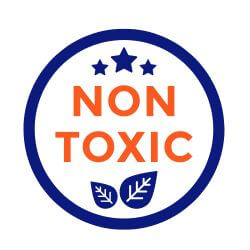Creating a tranquil feeding area in your nursery is essential for both you and your little one. As new parents, the feeding process can be both a joyful and challenging time, and having a designated space that is relaxing can make all the difference. In this blog post, we will explore how to design a soothing feeding area that promotes comfort and calm, while also incorporating practical solutions for nursery storage. Let’s dive in!
Why Pink Space Matters
The environment in which you feed your baby can greatly impact the experience. A peaceful area allows for bonding moments and can ease the stress that sometimes accompanies feeding times. By carefully considering elements in your nursery, you can ensure that both you and your child feel relaxed during these special moments.
Choosing the Right Location
The first step in creating a relaxing feeding area in your nursery is selecting the ideal location. Think about:
- Light: Choose a spot with soft, natural light. Avoid direct sunlight that can create glare and be uncomfortable.
- Proximity: Locate the area near the crib or changing station to facilitate easy transitions during feeding.
- Privacy: Consider a corner that feels cozy and private, where you can comfortably nurse or bottle-feed without distractions.
Comfort is Key

Once you've settled on the location, focus on comfort. This is where nursery storage options can really play a significant role in enhancing your feeding area.
Selecting the Right Seating
Your choice of seating is critical. A comfortable chair or rocking chair can significantly affect your feeding experience:
- Supportive Chair: Opt for a chair that provides good back support. Consider a glider or recliner that allows for gentle rocking—perfect for soothing your baby.
- Pillows: Use soft pillows or cushions to support your arms and back. These can enhance your comfort level while feeding.
- Soft Fabrics: Look for materials that are soft and easy to clean. Fabrics like microfiber or cotton will make for a cozy atmosphere.
Setting the Mood
Lighting and colors also significantly contribute to the ambiance of your feeding area. Here are some tips to enhance the mood:
- Warm Colors: Choose warm, soothing colors for the walls or décor. Shades like soft pastels or calming neutrals can create a serene environment.
- Lighting Options: Soft, adjustable lighting can help create a tranquil atmosphere, especially during nighttime feedings. Consider adding a dimmable lamp or string lights for a gentle glow.
- Sound: You might want to think about incorporating soft background music or a white noise machine to mask other sounds and keep the environment peaceful.
Nurturing Essentials and Nursery Storage

To make your feeding area as functional as possible, consider how you’ll organize feeding essentials. Effective nursery storage solutions can keep everything within reach and help maintain a tidy environment. Here are some clever ideas:
Organize Essentials
Create a designated space for all your feeding essentials:
- Bottles and Pacifiers: Store these in a visually appealing caddy or basket that fits the theme of your nursery.
- Burp Cloths and Blankets: Keep a small basket or shelf nearby for easy access to burp cloths or soothing blankets.
- Water and Snacks: Don't forget to have water and healthy snacks on hand for you. A small side table can also serve as a storage solution for your essentials.
Incorporating Multi-Functional Furniture
Choosing nursery furniture that incorporates storage can be a game-changer in maximizing space. Consider furniture items such as:
- Storage Ottomans: These not only provide a place to rest your feet while feeding but also double as storage for toys or blankets.
- Bookshelves: A beautiful bookshelf can serve both as a decorative piece and a practical storage spot for books, toys, or supplies.
- Changing Table with Storage: If you're also using the feeding area for changing, investing in a changing table that has extra storage drawers can streamline the process.
Personal Touches That Matter
Adding personal decor can make the feeding area feel unique and inviting. This is where you can get creative! Here are some ideas:
Art and Decorations
- Wall Art: Hang calming prints or personalized art that reflects your family and makes the space feel special.
- Photos: A small collage of family photos can bring warmth and familiarity to the area.
- Plants: Adding a touch of greenery can purify the air and add a peaceful aesthetic. Choose low-maintenance plants that can thrive indoors.
Creating a Relaxation Zone
Consider adding elements specifically for relaxation:
- Aromatherapy: Utilize essential oil diffusers with calming scents like lavender to add a soothing aroma to the area.
- Comfort Items: Keep a cozy blanket nearby for snuggling up with your baby or for your own comfort when feeding.
Embracing Routine
Having a cozy, organized feeding area can help establish a routine. A consistent environment can aid in signaling to your baby that it's feeding time. Maintaining a comfortable and tranquil space can simplify the feeding process and strengthen the bond between you and your baby.
The Importance of Involvement
Involve your partner or another caregiver in the process of creating this space. It’s a wonderful way to share the responsibilities and experiences of feeding, while allowing more personalized touches that represent both parents.
Final Thoughts on Your Serene Feeding Sanctuary
Transforming your nursery into a relaxing feeding area can make a significant difference in how both you and your baby experience feeding times. By focusing on comfort, organization, and a calming atmosphere, you’re not only creating a nurturing space but also a retreat for precious moments together.
So why not start planning today? A serene feeding space awaits you and your little one, ready to create lasting memories in the comfort of home.








